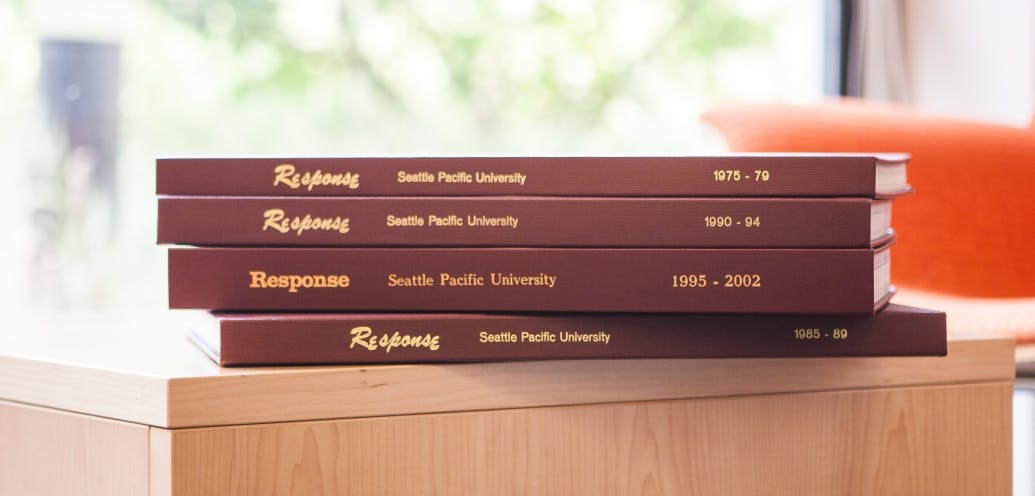This issue highlights ways that the Seattle Pacific community learns from, and contributes to, our city.
I hope you find here a fresh perspective on work done in, for, and through cities. But I also hope this issue inspires you to ask questions about your own city or community — questions about who the spaces most benefit, who is left out, and what needs to change.

Urban spaces are planned for a purpose, and everything from the widths of streets and sidewalks to the curves of a bench and the color of streetlights encourages certain behaviors and prevents others. For instance, benches at some bus stops in downtown Seattle are slanted at standing height. They are comfortable resting spots for a few minutes while I wait for a bus, but no one can lie down or sleep on them.
A few years ago, in San Francisco, St. Mary’s Cathedral made the news when it installed a rotating sprinkler system that, every 30 to 60 minutes, drenched anyone trying to sleep in the church’s doorways. In London, city planners installed spikes in the ground under bridges and awnings to prevent anyone from laying in those spaces. These designs, which critics call “hostile architecture,” are also used to prevent other behaviors, like skateboarding and gang violence, that can disrupt shared spaces.
City planners have to keep in mind all of a city’s residents, of course, including those who want to sit on that bench to wait for a bus. But Cara Chellew, a researcher at York University who studies the design, regulation, and politics of public space, points out that hostile architecture has the biggest negative impact on those with little social power to change it, including people who are homeless, elderly, or have mental illnesses. Small individual actions, especially in cities, have similar power to create hospitable or hostile spaces.
One of the things I study as a communication researcher is human interaction, and the ways that people’s decisions have consequences that, intentionally or not, shape their communities. A lot of research shows that good and bad attitudes, fitness habits, and other personal behaviors impact those around us to behave similarly through a process of social contagion.
The economist Thomas Schelling studied the ways that small individual preferences, like the preference to live next to people who look like you — or even to live in a neighborhood where people mostly look like you — leads to near-total segregation of urban and suburban communities. Hundreds of individuals making decisions about their own behavior based on motives that are not malicious nonetheless create a social space that is not welcoming to strangers.
We might make small decisions unthinkingly, based on convenience, affordability, or comfort, thinking they only impact ourselves. But in a city that is densely packed with people, like Seattle, many of our decisions affect others. And small decisions add up to a design — in life as in cities — that is hospitable to some and inhospitable to others.
The journalist and lay theologian G.K. Chesterton wrote that the only way to redeem broken earthly spaces is to love them “with a transcendental tie and without any earthly reason.” As Christians we are called to live beyond earthly reason — to love our neighbors as ourselves, to act justly, and to love mercy. In the urban space of a city, that means thinking about how our personal decisions contribute to hospitable spaces and a welcoming community.




